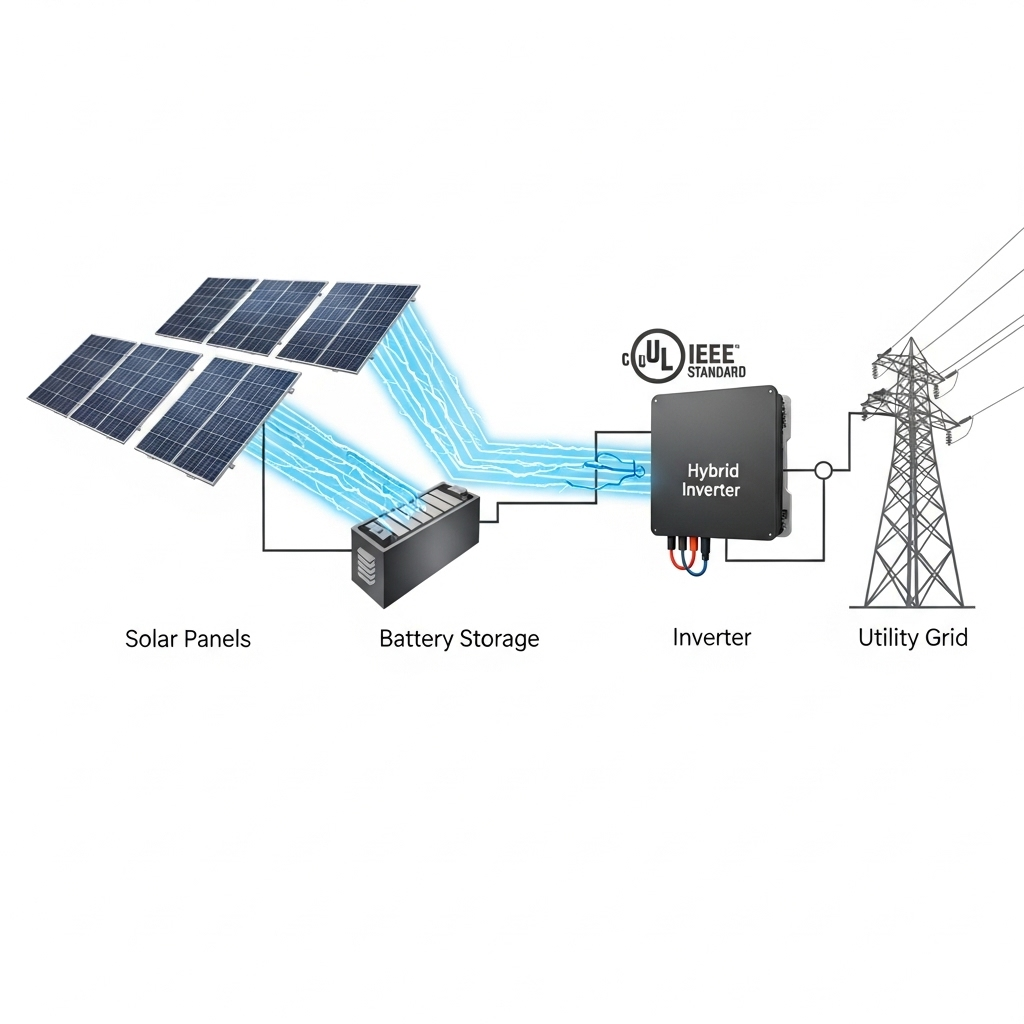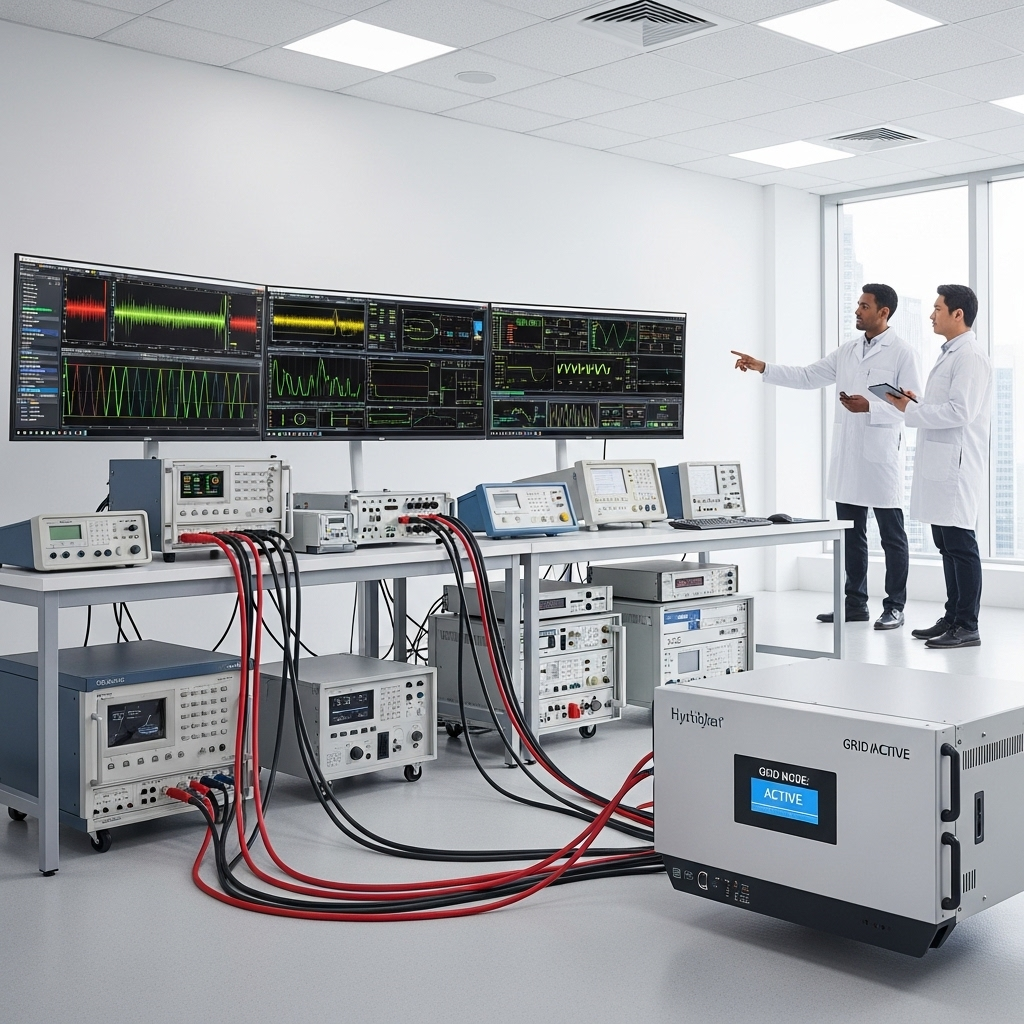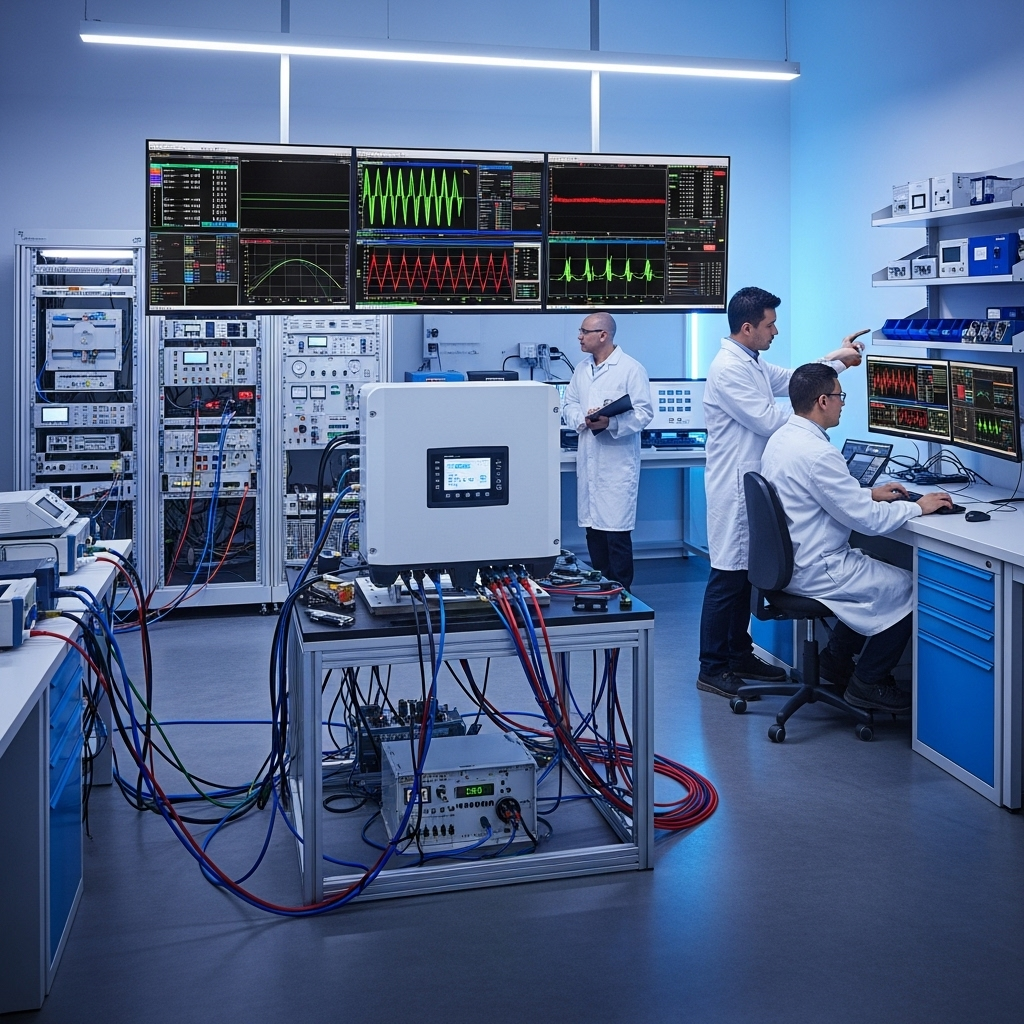Connecting a solar or energy storage system to the electric grid is more than just a physical link. It requires sophisticated communication and adherence to strict standards that ensure safety, reliability, and stability for the entire power system. Two of the most critical standards in North America are IEEE 1547 and UL 1741. Navigating their requirements is fundamental for manufacturers, installers, and system owners to achieve successful grid interconnection.

The Foundation of Interconnection Standards
To appreciate the current landscape, it's important to recognize the roles these two foundational standards play. They work in tandem, with one setting the performance requirements and the other establishing the safety and testing framework.
What is IEEE 1547?
IEEE 1547 is the Standard for Interconnection and Interoperability of Distributed Energy Resources (DERs) with Associated Electric Power Systems Interfaces. In simple terms, it defines how DERs like solar inverters and energy storage systems must behave when connected to the grid. The original version from 2003 primarily focused on preventing DERs from causing problems. Its main directive was for systems to disconnect from the grid during disturbances. The 2018 revision, however, marked a significant shift. It requires DERs to be active grid participants, capable of supporting the grid during minor fluctuations.
The Role of UL 1741
UL 1741 is the Standard for Inverters, Converters, Controllers and Interconnection System Equipment for Use With Distributed Energy Resources. While IEEE 1547 sets the 'what' (performance requirements), UL 1741 defines the 'how' (testing and safety certification). It provides the testing procedures to verify that an inverter can safely and reliably perform the functions mandated by IEEE 1547. It covers construction, materials, and protection against risks like fire and electric shock, ensuring the physical equipment is safe for operation.
The Evolution: Introducing the UL 1741 SB Supplement
The update to IEEE 1547-2018 introduced advanced grid support functions that required a new testing and certification program. This is where the UL 1741 Supplement SB comes in. It bridges the gap between the new performance requirements of IEEE 1547-2018 and the certification process.
Why was UL 1741 SB Created?
UL 1741 SB was developed to provide a clear testing methodology for the advanced 'smart inverter' functions mandated by IEEE 1547-2018. According to a report by the International Renewable Energy Agency (IRENA) on grid codes, the tests and procedures specified in IEEE 1547.1-2020 form the basis for the UL 1741 SB product standard. This ensures that any inverter certified under UL 1741 SB can provide critical grid support, such as voltage and frequency ride-through, power factor control, and voltage regulation. This evolution was necessary to manage the increasing number of renewable energy sources on the grid without compromising stability.
Key Functions Tested Under UL 1741 SB
UL 1741 SB outlines a series of tests for functions that allow inverters to actively support the grid. These include:
- Ride-Through Capability: The ability to remain connected and operate through minor voltage and frequency disturbances, preventing mass disconnections that could destabilize the grid.
- Voltage Regulation: Actively managing local voltage levels by adjusting reactive power, which is critical in areas with high solar penetration.
- Frequency Support: Modifying power output in response to grid frequency changes to help stabilize the system.
- Soft Start Reconnection: Gradually ramping up power after a grid outage to avoid sudden surges.
A Practical Roadmap to Grid Compliance
For manufacturers and system designers, achieving compliance is a multi-step process that requires careful planning and execution. Following a clear roadmap can streamline approvals and accelerate project timelines.
Step 1: Design for Compliance from the Start
Compliance begins at the product design stage. Engineers must embed the grid support functionalities of IEEE 1547-2018 directly into the inverter's software and hardware. This involves creating control algorithms that can accurately monitor grid conditions and respond within the required parameters. Proactively designing for these capabilities avoids costly redesigns later in the process.
Step 2: Rigorous Pre-Certification Testing
Before submitting a product to a Nationally Recognized Testing Laboratory (NRTL) like UL, manufacturers should conduct extensive in-house testing. This pre-certification phase helps identify and resolve potential issues early. Using grid simulators, engineers can replicate a wide range of grid conditions to verify that the inverter performs as expected under all specified scenarios. As noted in a U.S. Department of Energy report, standardized testing procedures are vital for ensuring all grid-connected inverters meet defined standards for safety and reliability.
Step 3: Formal Certification with an NRTL
Once a product has passed internal validation, it must be submitted to an NRTL for official UL 1741 SB certification. The lab will perform the complete suite of tests defined in the standard. This independent verification is what utilities and regulatory bodies rely on to approve equipment for interconnection. A successful certification demonstrates that the product is both safe and compliant with grid codes.
Step 4: System Integration and Performance Verification
Achieving certification for an inverter is a major milestone, but compliance also extends to the entire installed system. The actual on-site performance depends on the quality and compatibility of all components. Therefore, understanding the metrics of your chosen hardware is essential. A comprehensive analysis of system efficiency, battery charge/discharge rates, and inverter loading, as detailed in the Ultimate Reference for Solar & Storage Performance, ensures the system operates effectively and can meet the dynamic demands of grid compliance in real-world conditions.
The Impact on the Future of Energy
The widespread adoption of these advanced standards is transforming the relationship between distributed energy resources and the power grid. Instead of being passive generators, solar and storage systems are becoming essential partners in maintaining a stable and resilient electricity supply. This capability is crucial for enabling higher levels of renewable energy penetration. The work done to update these standards, as seen in projects that helped connect thousands of solar systems in Hawaii, sets a precedent for modernizing grids across the country. By requiring DERs to contribute to grid stability, standards like IEEE 1547 and UL 1741 SB pave the way for a more decentralized, resilient, and renewable-powered energy future.
Your Path Forward
The journey to grid compliance through UL 1741 SB and IEEE 1547 is detailed but manageable. It demands a thorough understanding of the technical requirements, a commitment to rigorous testing, and a focus on high-quality system design. By following this roadmap, manufacturers can successfully bring compliant products to market, and system owners can ensure their investments are safe, reliable, and fully capable of supporting the modern electric grid. This framework not only facilitates regulatory approval but also builds a foundation of trust between utilities and energy producers, which is essential for the continued growth of distributed energy.
Disclaimer: This article provides general information and does not constitute legal or investment advice. Always consult with a qualified professional for guidance specific to your situation.
Frequently Asked Questions
What is the main difference between IEEE 1547 and UL 1741?
IEEE 1547 is a performance and interoperability standard that dictates how distributed energy resources (DERs) must function when connected to the grid. UL 1741 is a safety and testing standard that verifies inverters and other equipment meet the performance requirements of IEEE 1547 and are safe to operate.
Is UL 1741 SB certification mandatory?
Mandates for UL 1741 SB certification are determined by local utilities and jurisdictions (Authorities Having Jurisdiction, or AHJs). However, it is becoming the de facto requirement across North America for any new DER system seeking to interconnect with the grid, as it certifies compliance with the latest IEEE 1547-2018 standard.
How do these standards affect existing solar installations?
Generally, existing installations that were compliant at the time of their connection are grandfathered in. However, as noted in the IRENA Grid Codes report, if a facility undergoes a significant modification or modernization, it may be required to comply with the newer requirements. This policy balances investor certainty with the need to upgrade grid capabilities over time.





Leave a comment
All comments are moderated before being published.
This site is protected by hCaptcha and the hCaptcha Privacy Policy and Terms of Service apply.